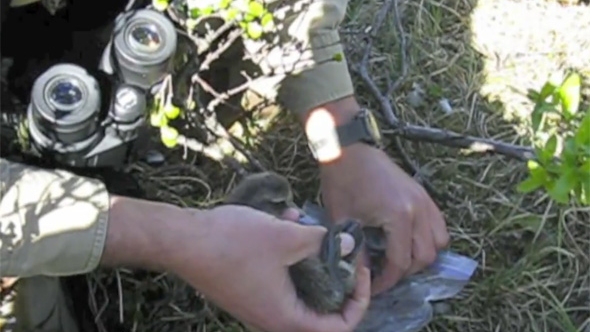March 21, 2012 | News | New Publication
How old is that animal?
What is the exact age of this animal? This question arises quite commonly to field-ecologists when they need to estimate age-specific survival from wild populations. Commonly, data are gathered using capture-mark-recapture sampling, where individuals are captured and tagged before being released. The aim is to enable the identification of the animals once recaptured some time later in order to define, for example, the age structure of a population. The problem is that it is hard to estimate the real age for many species. Times of birth for marked animals thus are commonly unknown and many are never found after they have died, the result being that data obtained quite often have large gaps.
A group of MPDIR-researchers have now developed a program called BaSTA (Bayesian Survival Trajectory Analysis) that allows to fill these gaps. They have published their work in the scientific journal “Methods in Ecology and Evolution” and created a film that explains the principle and functioning of BaSTA.

© BaSTA Film / MPIDR, Methods in Ecology and Evolution
At the population level mortality can be expressed as the probability that any individual of this population dies within an interval of time. Commonly, biologists assume that the probability of dying is the same within any age interval. It is just in few species however, such as the freshwater invertebrate hydra, that constant mortality with age has been found. That is, for many species, mortality does change with age: For example, it can be very high in the first weeks and months of their life and declines gradually until individuals reach maturity, after which mortality increases again.
It is important to find out what the mortality curves of single species look like, for example to develop management and conservation plans for endangered species. To determine the typical life spans of species, researchers capture wild animals and tag them with unique ear tags or rings. At every sampling occasion the animals that had been previously marked are recorded when detected. But there are clear limits to this method: The age of many species cannot be visually determined and quite often individuals are tagged for the first time when they are adults, thus their age is unknown. It is also common that researchers do not find the tagged animals after they have died. In addition, and particularly with long-live species, many studies cover only a fraction of the species' lifespan. In these cases, the age of the oldest individual observed is equal to the duration of the study.
In the last few years, researchers have acknowledged this problem and have developed statistical methods that attempt to minimize these data limitations. However, the methods are difficult to implement and require programming skills not accessible to every researcher.
The MPIDR-researchers Fernando Colchero, Owen Jones, and Maren Rebke have developed a statistical package called BaSTA (Bayesian Survival Trajectory Analysis) allowing the automated analysis of the survival data to understand age patterns of mortality when a large proportion of the individuals are of unknown age. The tool estimates survival parameters, but also unknown times of birth and death.
But it is not only ecologists who are taking advantage of BaSTA: Researchers from other scientific fields too, such as evolutionary biologists and historians, may use it to fill their data gaps.
More Information